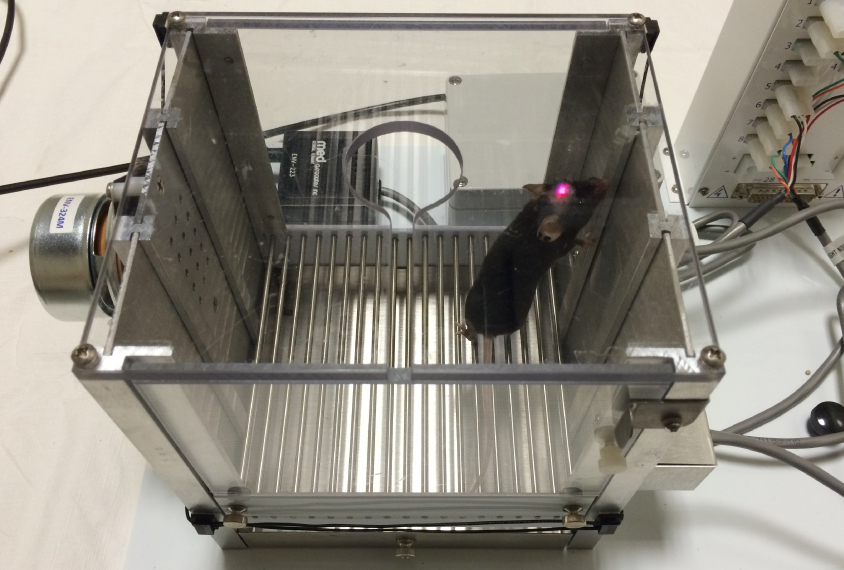
With bright tricks, light leaves brain forever changed
Using flashes of light, scientists can spark seizures, tweak cell junctions and motivate mice from afar.
Using flashes of light, scientists can spark seizures, tweak cell junctions and motivate mice from afar.
These abilities rely on optogenetics, a technique that uses blue light to activate light-sensitive proteins, called opsins, in neurons. The activation triggers calcium ions to flood into the cells, causing the cells to fire, or produces chemical reactions that change brain activity.
By engineering mice to express opsins in specific neurons, researchers can investigate neural circuits underlying specific behaviors or conditions.
Starting seizures:
Flashes of light induce seizures in a new strain of mice, which could lead to a better understanding of epilepsy. Seizures in mice tend to be spontaneous, making it difficult to capture brain activity at their onset. The new mice, described 18 January in Neuron, allow researchers to control precisely when a seizure occurs1.
The researchers injected mice with a virus carrying the genes for opsins. They developed four strains of mice by targeting the opsins to as many types of neurons.
Blue light sent through an optical fiber into the brains of these mice activates the modified neurons, the researchers found. The activation triggers a seizure within minutes.
The mice also carry a genetic modification that makes their neurons glow green when they fire. This revealed that certain neurons activate quickly at the onset of a seizure and keep seizures going. Inhibiting another type of neuron cuts seizures short.
Memorable molecules:
Optogenetics can also alter neuronal junctions, or synapses, in a way that could help form memories.
In a study published 8 February in Neuron, researchers expressed in cultured neurons a pair of plant proteins that stick together in blue light2. They tethered one of the proteins to the signal-receiving end of synapses, and its partner to receptors for the chemical messenger AMPA. These receptors normally float in the cell but accumulate at the synapse when learning occurs.
The optogenetics approach was able to produce the same clustering. Bathing the neurons in blue light caused the AMPA receptor to crowd into the synaptic membrane, increasing the cells’ responsiveness to AMPA released from nearby neurons.
Remote rewards:
Wireless optogenetics setups generally rely on radio waves to send control signals to devices implanted in a mouse brain. But reflective surfaces, such as cage walls or drinking water, can interfere with the signals. A new wireless device, described 8 February in Neuron, uses high-frequency wavelengths that can pass through reflective objects3.
The device consists of an ultrathin needle with a miniature light-emitting diode at its tip. Researchers insert the needle into a mouse’s brain. A flexible wire connects the needle to a tiny power source, a pair of microchips and an antenna outside the skull. The external portion of the device is roughly half the size of a dime and has a light that glows red when a transmitter activates it.
The researchers implanted the device in 23 mice, targeting neurons in brain areas involved in sensing reward. The animals moved freely through different types of cages and pens. When they entered one side of a two-chambered cage, the researchers activated the device, stimulating the reward neurons and causing the mice to develop a preference for that chamber.
References:
Recommended reading

Expediting clinical trials for profound autism: Q&A with Matthew State

Too much or too little brain synchrony may underlie autism subtypes
Explore more from The Transmitter

Mitochondrial ‘landscape’ shifts across human brain

